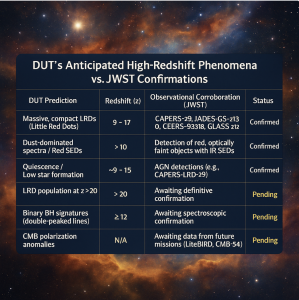Introduction
The discovery that opioids selectively block pain at the spinal cord level without affecting sympathetic, sensory, or motor functions opened a new era in acute and chronic pain management.1,2 Fentanyl, a lipophilic-opioid adjunct, combined with local anesthetics, has become the preferred choice for spinal anesthesia for cesarean section (C-section).2 Compared with traditional local anesthetics, spinal anesthesia combined with fentanyl helps improve intraoperative analgesia, reduce the risk of intraoperative hypotension (by allowing the use of subtherapeutic-dose local anesthetics), and reduce nausea/vomiting.3,4 However, lowering the dosage of local anesthetics may reduce hypotension while increasing the risk of anesthesia failure by lowering the levels of anesthesia sensory block.4 After delivery, carbetocin is used as a first-line uterotonic agent although it has significant vasodilatory effects5,6 and may counteract the previously gained hemodynamic advantage. Overall, it remains unclear whether the benefits of intrathecal low-dose local anesthetic-fentanyl outweigh its risks.
In this non-inferiority study, we aimed to compare the effects of 15 mg ropivacaine-10 μg fentanyl (possible ideal dose2) and 16.5 mg ropivacaine alone in C-section spinal anesthesia to determine the necessity of using low-dose ropivacaine-fentanyl spinal anesthesia alongside carbetocin. A sequential analysis for the comparison was planned to first test the noninferiority of 15 mg ropivacaine-10 μg fentanyl as compared with 16.5 mg ropivacaine.7 If this condition was satisfied, then the superiority of 15 mg ropivacaine-10 μg fentanyl over 16.5 mg ropivacaine could be assessed in a second test of the conventional null hypothesis of no difference between the two treatments.7
Methods
The trial was approved by the Institutional Review Board of The First Hospital of Fuyang, Hangzhou, China on January 29, 2024 (Ethics approval: 2024-LW-010), and prospectively registered in the Chinese Clinical Trials Registry (ChiCTR2400080936) on February 18, 2024. The first patient was enrolled in our clinical trial on May 2, 2024, after the completion of the pilot study (12 participants randomized in each group from February 21, 2024, to April 26, 2024). Our study complies with the Declaration of Helsinki. Data reporting followed the Consolidated Standards of Reporting Trials guidelines (Supplementary Appendix 1).7
Participants and Setting
Sixty participants were included in the randomized double-blind study, at a 1:1 ratio between May 2, 2024 and September 20, 2024 (TX). Written informed consent was obtained from each participant before trial initiation. The inclusion criteria were as follows: American Society of Anesthesiologists physical status I or II, elective or subemergency C-sections, age 18–40 years, single pregnancy, gestational age > 37 weeks, weight < 100 kg, height > 150 cm, and normal fetal heart rate. The exclusion criteria were: known allergy to any of the study drugs, spinal malformations, emergency, preeclampsia or pregnancy-related hypertension, and patient refusal. The criteria for discontinuation, suspension, and loss to follow-up included the participants unwilling to continue the clinical trial and voluntarily withdrawing during the trial and sudden adverse events such as drug allergy, massive bleeding, and amniotic fluid embolism. Based on a computer-generated random number table (block is 4), the patients were randomized (scrambled, then numbered; opaque envelopes) to receive one of two drugs: 0.75% ropivacaine 2.2 mL (Group R), or 0.75% ropivacaine 2 mL combined with 0.2 mL/10μg fentanyl (Group F). The drugs were prepared by an investigator (YL) who was not involved in the remainder of the study. Participants, intervention provider, and outcome assessors were blinded to group allocation.
Study Protocol
Before the study, patients fasted for 8 h without premedication. In the operating room, a venous line was placed in the upper limb, and patients were instructed on sensory and motor assessment methods. Electrocardiogram (both rhythm and heart rate), non-invasive blood pressure (BP), and SpO2 values were monitored by standard. Baseline BP and heart rate were averaged from three preoperative measurements. Fluid co-loading was performed by an intravenous infusion of 500 mL lactated Ringer’s solution, within 10 min of anesthesia initiation. During the combined spinal-epidural technique implementation (ML), patients were positioned laterally. A 16-gauge Tuohy needle (Zhejiang Fert Medical Equipment Co., Ltd., China) and a 25-gauge pencil tip needle were used to locate the L3-L4 vertebral space, with the orifice facing the cephalic side.8 Subsequently, 0.8 mL of cerebrospinal fluid mixed with 2.2 mL of the pre-prepared drugs was injected into the subarachnoid space for around 10s. Thereafter, a porous epidural catheter was inserted 3 cm into the epidural space. Patients were then placed supine (time defined as “0”) with a 15° left tilt until the surgeon requested repositioning.
Reference Treatment
A 16.5 mg dose of ropivacaine was used, based on historical C-section anesthesia data from the hospital.8 The 95% effective dose (ED95) of plain ropivacaine is close to 27 mg,9 but carries a high risk of hypotension. This subeffective dose (16.5 mg) was able to provide a sufficient anesthesia block plane for most patients (27/30) due to increased injection speed and back infusion related to turbulence or elevated injection temperature.10 Moreover, it provided relatively stable hemodynamics. The incidence rates of severe hypotension (systolic BP < 80 mmHg), nausea and vomiting in the treatment group were comparable with those reported for an experimental group (which had a variable rate of phenylephrine infusion with rescue phenylephrine boluses) by Siddik-Sayyid et al.11
Measurements
The primary outcome was hypotension incidence. We added the success rate of anesthesia to be another primary outcome because they cannot be discussed separately and both are critical events. The secondary outcomes included other anesthetic characteristics (analgesic supplementation time after anesthesia, vasopressor use, neonatal outcomes, patient satisfaction with anesthesia and postoperative analgesia) and anesthesia-related adverse events (nausea/vomiting, trembling, chest tightness, pruritus, transient nerve root irritation syndrome, and some other adverse events).
Hypotension was defined as systolic BP < 100 mmHg or < 80% of baseline; hypotension with a basal systolic BP of 90–100 mmHg was changed as < 90 mmHg. Anesthesia success was defined by two criteria: the block plane of pinprick sensation reached ≥ T6 within 15 min and meeting the surgical needs. Throughout the procedure, 5‒7 mL of 2% lidocaine was injected epidurally if the sensory blocking plane did not reach T6 within 15 min, or if there was unbearable discomfort (a score ≥ 50 mm on the 100-mm visual analogue pain scale [VAPS] or if the patient requested a remedy). Therefore, subsequent data on BP and sensory and motor block were not recorded when lidocaine was administered.
The BP, heart rate, and SpO2 values were monitored every 2 min until delivery, then every 5 min. Metaramine (0.25 mg) was used for hypotension; ephedrine (6 mg) was administered for heart rate < 50 bpm. Sensory changes in the pinprick, motor block and VAPS assessments were recorded at 2 and 5 min, then every 5 min until 30 min, and every 30 min until sensory recovery to S2, motor recovery and the end of the surgery (including incision, delivery, and abdominal closure). Motor block was assessed by the investigators using a modified Bromage scale (0 = whole-leg motion; 1 = unable to lift the straight leg, can bend the knees; 2 = unable to bend the knees, can bend the ankles; 3 = no movement). Carbetocin 100 μg was routinely injected intravenously (over 30s) after umbilical cord amputation. Immediately after surgery, the patients were asked to rate the quality of anesthesia on a four-point scale (0 = very poor, 1 = poor, 2 = satisfactory, and 3 = very satisfactory).
Postoperative patient-controlled intravenous analgesia (sufentanil, 100 μg; dexmedetomidine, 200 μg; metoclopramide, 20 mg; and normal saline, total 100 mL) was provided. The administration settings included a single dose (0.5 mL), a blocking time of 15 min, and a background injection of 2 mL/h. Analgesia was further managed by oral celecoxib (0.2 g, q12 h) after surgery. The VAPS and analgesic sufentanil dosage were recorded 24 h postoperatively. The four-point scale was used 24 h postoperatively, to evaluate postoperative analgesic effects. Patients were examined for transient nerve root irritation at 1 day, 3 days, and 1 month after surgery. Adverse events were documented.
Statistical Analysis
Following the International Conference of Statistical Guidelines for Harmonisation E9 for Clinical Trials, subsequent to establishing non-inferiority, the superiority of the alternative treatment over the reference treatment can additionally be tested without the need to adjust the level of significance.12 Hypotension incidence and analgesic success rate in both groups were evaluated using Fisher’s precision test, followed by non-inferiority and superiority testing methods.12,13 In the non-inferior approach, the null hypothesis suggests that the treatment group is inferior to the reference group. When this null hypothesis is excluded (1-tailed P < 0.025), another hypothesis, that the new treatment group is not inferior to the reference group, becomes more likely. In the superiority approach, the null hypothesis implies that the effects of the compared groups are equal.12 If the null hypothesis is rejected after a statistical test (2-tailed P < 0.05), it can be concluded that one group is superior to the other group.12 Another way of describing superiority and non-inferiority is to use the confidence interval (CI) approach: if the CI of the beneficial outcomes’ difference between the two groups lies entirely on one side of zero, superiority was established; while if the CI lies completely on one side of a boundary and includes zero, the group is non-inferior but not shown to be superior.7
Sample Size
Our original design for sample size calculations was based on a difference test for hypotension and a non-inferiority test for anesthesia success rate. Based on our pilot study, the probabilities of incidence of hypotension and successful anesthesia were 67% vs 83%, and 92% vs 75% for Groups F and R, respectively. Assuming a difference test for hypotension, a 2-tailed alpha of 0.05, and a power of 0.90, each binominal group need 149 samples. Assuming that the non-inferiority boundary for anesthesia success rate is 0.20, a one-sided α value of 0.025, and a power of 0.80, the maximum calculated required sample size is 28. This was increased to 30 per group to account for possible dropouts and the study by P. Gautier et al.12 When we had a sample size of 60 patients, we estimated that our research would fulfil the difference criteria for hypotension, maintaining a power of 0.80 and a type 1 error of 0.05 (PASS version 15.0.5; NCSS, LLC., Kaysville, UT, USA).13 And as we were confronted with the challenge of a nearly depleted budget, thus we decided to stop the trial at this point.
For secondary outcomes, the following methods were used: Continuous variables were presented as the mean (standard deviation) or median (range) and compared with the t-test or Mann‒Whitney U-test, depending on whether the data were distributed normally or not. Categorical variables were presented as frequency and analyzed using Fisher’s exact tests. Repeated measurements of BP and heart rate were described separately before and after delivery, using generalized estimation equations. The onset of hypotension was measured using the Kaplan–Meier curves. The area under the curve (AUC) of the VAPS × time under pain burden during the 24-h study period was calculated using the trapezoid rule.14 Two-tailed P < 0.05 was considered significant. Statistical analyses of the primary outcomes were performed using SAS software (version 9.4; SAS Institute Inc., Cary, NC, USA); secondary analyses were performed using GraphPad Prism version 9.5.0 (GraphPad, San Diego, CA, USA).
Sensitivity Analysis
As a post-sensitivity analysis for the primary outcomes, we performed a logistic regression model using a stepwise program whereby the model was streamlined by retaining variables that significantly improved its explanatory power.15
Results
The patient randomization process is shown in Figure 1. No participants dropped out, and all data were analyzed. There were no differences between the two groups in terms of patient characteristics (Table 1). Anesthesia sensory block height was sufficient in all patients, except three patients in Group R. The results of anesthesia are summarized in Tables 2 and 3.
|
Table 1 Patient Characteristics
|
 |
Table 2 Anesthetic Primary Outcome
|
 |
Table 3 Anesthetic Secondary Outcome
|
 |
Figure 1 Study flow chart.
|
Primary Outcomes
The hypotension incidence rates were 22/30 (73.3%) in Group F and 29/30 (96.7%) in Group R, while anesthesia success rates were 28/30 (93.3%) and 20/30 (66.7%), respectively. Significant differences were observed between the two groups (Group F vs Group R: Hypotension, Relative Risk [RR], 0.1; 95% CI, 0.0 to 0.7, P = 0.03; Anesthesia success rate, RR, 5.0; 95% CI, 1.4 to 19.3, P = 0.02). The CIs for both outcomes were entirely on one side of zero, with analysis conducted using both intention-to-treat (ITT) and per-protocol approaches.7 The P values for superiority and non-inferiority were both significant (Table 2). Thus, the null hypothesis of equal outcomes between Group F and Group R was rejected, supporting the hypothesis that Group F has superior hypotension incidence and anesthesia success rates. Additionally, hypotension incidence significantly increased after carbetocin administration (Group F vs Group R: 43.3% vs 76.7% before; and 70% vs 90% after carbetocin use).
Secondary Outcomes
All patients were satisfied with the anesthesia. Hemodynamic changes over time are shown in Figure 2. BP fluctuations were less in Group F before carbetocin administration compared to Group R, but both groups had persistent hypotension after carbetocin administration. The requirement for vasopressors was less in Group F than in Group R, whereas no difference was observed in the mean level of anesthesia block between the two groups during the first 30 min of anesthesia (Figure 3). One patient in Group R required ephedrine treatment because of decreased BP and bradycardia. The effective anesthetic time (T6 time, difference of Group F vs Group R: 58 min; 95% CI, 15 to 70; P < 0.001), the time to the first request for analgesia (difference of Group F vs Group R: 73 min; 95% CI, 55 to 120; P < 0.001) and the onset of hypotension were significantly different (Log rank test, Hazard Ratio, 2.1; 95% CI, 1.2 to 3.7; P < 0.005, Supplementary Appendix 2) between the groups. The number of transient chest tightness episodes (five episodes occurred after carbetocin administration, two were associated with hypotension after spinal anesthesia, three were associated with right-sided bed tilt at the surgeon’s request, and one was of unknown cause) in Group R was higher than that in Group F. A single newborn in Group R had a 1-min Apgar score of 5 points due to a wet lung, which resolved after treatment. There were no significant intergroup differences in the Apgar scores, the evaluation of intraoperative anesthesia and postoperative analgesia, recovery of motor function, the number of episodes of nausea/vomiting, and trembling, and the 24-h cumulative sufentanil dosage (P = 0.51) and VAPS × time AUC (P = 0.58) between the two groups (Supplementary Appendix 3). The analgesic score was weakly correlated with the sufentanil dosage (r = 0.23, P = 0.23). No case of respiratory depression, sedation, postoperative headache, pruritus, or transient nerve root irritation syndrome was observed in either group.
 |
Figure 2 Changes in hemodynamics before and after delivery under spinal anesthesia and metaraminol usage. Error bars represent SEM.
|
 |
Figure 3 Development of sensory blockade during the first 30 minutes of anesthesia (A) and metaraminol usage (B). Error bars represent SEM. *P < 0.05.
|
Sensitivity Analysis
Post-hoc logistic regression analysis of the primary outcomes demonstrated that the superiority observed in Group F persisted (Figure 4). In addition, it demonstrated that these two outcomes are in the opposite direction of the beneficial anesthesia sensory block dermatomal.
 |
Figure 4 Post-hoc logistic regression analysis for the primary outcomes: Hypotension (A) and Successful anesthesia (B). Model of hypotension: After stepwise selection, three variables—grouping R vs F, blood loss, and the highest sensory block plane—were selected from 19 risk variables (age, height, weight, BMI, gestational age, elective/sub-emergency, complicating other diseases, neonatal weight, highest anesthesia block plane, blood loss, total intraoperative fluid volume, operation time, time to reach the highest plane, time to complete motor block, secondary uterotonics [0= none, 1= ergometrine, 2= sulprostone, 3= oxytocin], position of the bed, Baseline systolic blood pressure, Baseline diastolic blood pressure, Baseline heart rate) for the model of hypotension incidence. Model of successful anesthesia: After stepwise selection, two variables—the grouping R vs F and highest sensory block plane—were selected from 12 potential relative variables (age, height, weight, body mass index [BMI], gestational age, elective/sub-emergency, neonatal weight, highest anesthesia block plane, operation time, time to reach the highest plane, time to reach block plane T6, and time to complete motor block) for the predictive model of success rates of anesthesia.
|
Disscussion
This study indicated that low-dose spinal ropivacaine combined with fentanyl was superior to plain ropivacaine, which could lower hypotension rates, enhance anesthesia effectiveness, and prevent chest tightness without increasing pruritus and other maternal and neonatal adverse events even alongside the cardiovascular risks of carbetocin.
Considering the recent works by Marc Van de Velde, P. Gautier et al, Arzola C et al, and ourselves using the same endpoints in similar clinical settings, it is possible to have a precise understanding of the risk (compromising anesthetic efficacy) and benefit (lower maternal hypotension) of low-dose local anesthetics, as well as the local anesthetic-sparing effect of intrathecal opioid adjuvants.3,4,12,16 In our study, the maintenance of the T6 block time was significantly shorter in Group R than in Group F, and nine patients in Group R experienced hypotension despite anesthesia failure. Group F improved this condition, reducing the intraoperative hypotension risk and extending the effective anesthetic time, and no one simultaneously experienced the two adverse outcomes. This improvement is due to the decreased anesthetic density of low-dose local anesthetics and the fact that fentanyl is a lipophilic opioid with rapid onset, intrathecal administration is 10–20 times more potent than intravenous administration,17 and separation of analgesia from sympathetic block.
However, these results varied in magnitude among different experiments, especially in maternal hypotension.4 A similar study by Ben-David et al, which compared 10 mg bupivacaine and 5mg bupivacaine-25 micrograms fentanyl, herein, the local anesthetic-fentanyl group experienced less hypotension. However, Ben-David et al reported a significantly lower rate of hypotension in the low spinal doses combined fentanyl group than we reported (31% vs 73.3%).18 This difference may be related to the absence of uterine contraction-stimulating drugs, less strict definition of hypotension (BP < 95 mmHg or < 75% of baseline), different peak sensory levels due to local anesthetics’ dosages, and lower anesthesia density (no complete motor block and 8/16 participants reported transient pain, accompanied by a higher median peak sensory level in the mini-dose group).18 In contrast to the present study, a comparable research conducted by Susilo Chandra et al comparing 7.5 mg and 5 mg of hyperbaric bupivacaine with 25 micrograms of fentanyl and another research conducted by Gulec et al comparing 7 mg and 10 mg doses of intrathecal levobupivacaine observed no difference in hypotension incidence, which is believed to be the ceiling effect of hypotensive events.19,20 However, the key distinction lies in the inclusion of patients with uneven baseline weight values between groups and history of hypertension or preeclampsia (less hypotension during C-section under spinal anesthesia), and the recording of hypotension until delivery.21 Our study revealed that besides carbetocin, blood loss, and the highest sensory block plane, the dose of local anesthetics plays a crucial role in hypotension. In fact, anesthesia is not only fading from cephalad to caudad but also the density of anesthesia is also changing.22 Spinal hypotension should be assessed with consideration of both dermatomal level (extended sympathetic block) and anesthetic density. In our study, the groups had comparable peak sensory level, while the low-dose local anesthetics reduced the depth of sympathetic block, thereby decreasing the severity and incidence of hypotension; the adjuvant fentanyl enhanced the anesthetic effect, thus improving the success rate of anesthesia.
The role of carbetocin in these procedures should not be overlooked. Recent studies have shown that severe hemodynamic changes and other adverse reactions, such as nausea/vomiting, ST-segment depression and arrhythmia after delivery are primarily caused by the uterine contractions themselves, rather than by the act of delivery.5,23 Leiv et al have shown that oxytocin and carbetocin reduced systolic arterial pressure by 21% and 19%, respectively.6 In the context of the application of carbetocin, the incidence of hypotensive events represents different depths of sympathetic vascular tension against vasodilating effects of oxytocic receptors. However, few studies studied the efficacy of low-dose ropivacaine-fentanyl spinal anesthesia combined with carbetocin for the C-section. Our study fills this gap and shows that low-dose local anesthetic-fentanyl could improve hypotension and efficacy of spinal anesthesia and prevent chest tightness without maternal and neonatal adverse events alongside carbetocin administration.
Many patients who receive “adequate” intrathecal opioids to substitute low-dose local anesthesia also experience adverse reactions. The studies of Vishal et al and Singh et al indicated that, in the obstetric population undergoing the C-section, there may be an analgesic ceiling effect with the increase of intrathecal lipophilic opioid dose.2,24 Similar to a recent meta-analysis of Vishal et al, 10 µg of intrathecal fentanyl in our study improved intraoperative analgesia without any opioid-related adverse reactions.2 While consistent with other studies, the combination of ropivacaine and fentanyl did not raise opioid demand and show superior postoperative analgesia to reference treatment overall, only providing better analgesia of around 1 hour.14,17
Cardiovascular and hemodynamic alterations associated with late pregnancy increased susceptibility to hypotensive events after neuraxial sympathetic block.19 The reduction of intraoperative hypotension is generally thought to be achieved by reducing the dose of local anesthetics, which is limited by the anesthetic effects.16,19 The combination of subtherapeutic doses of local anesthetics-fentanyl became the primary method of balancing these two outcomes which were in the opposite direction of the beneficial anesthesia sensory block plane.3 Local anesthetics non-selectively block axon conduction.1 Depending on the local anesthetics used and their concentration, different degrees of sympathetic, sensory, and motor nerve blocks can be produced.1 In contrast, intrathecal addition of fentanyl enhances analgesia, without changing the degree of sympathetic block. The discriminating spinal analgesia works by selectively acting on presynaptic and postsynaptic opioid receptors in the dorsal horn glia of the spinal cord.1 Thus more stable hemodynamics can be maintained when subtherapeutic doses of ropivacaine-fentanyl were administrated, compared to conventional doses of ropivacaine without fentanyl.
Carbetocin, as a longer-acting oxytocic drug, is recommended for routine administration immediately after delivery.5 It affects endothelial receptors and triggers a vasodilatory effect on calcium through the activation of the nitric oxide pathway.25 In addition, oxytocic drugs are pharmacological vasoconstrictors that act on coronary vascularization26 and may induce dose-dependent myocardial ischemia through the direct relaxation effect on vascular smooth muscle.27,28 Hypotensive events in both groups increased in our study after carbetocin administration and chest tightness in Group R was significantly greater than that in Group F, which may be related to multiple factors, such as severe hypotension, air embolism, and adverse cardiovascular reactions to carbetocin.5,29,30 This suggests that the cardiovascular risks of carbetocin should not be overlooked and intrathecal opioids,31,32 or the difference in ropivacaine dosage, or a combination of both may play a myocardial protective role. Intrathecal addition of fentanyl to low-dose local anesthetic has been reported to reduce nausea/vomiting and tremors and to enable faster recovery of motor function in patients.2 These outcomes were comparable between groups, likely due to the too little differences in doses of ropivacaine, opioids, or our aggressive management of hypotension and stretch pain, which may explain the lack of a protective effect from fentanyl.
This study had some limitations. Notably, there were numerous cases of anesthesia supplementation in Group R. However, the combined spinal-epidural-based technique allowed epidural titration to be performed. The prophylactic use of vasopressors was not implemented despite their potential to improve hypotension. However, we minimized patient discomfort through multimodal prevention and rapid treatment of hypotension, and all patients were satisfied with anesthesia during the procedure. Finally, as a single-center trial, the generalizability of the findings may be limited.
Conclusions
In conclusion, with the negative circulatory effects of carbetocin, the combination of low-dose ropivacaine and fentanyl in spinal anesthesia for C-sections is superior to plain ropivacaine in improving maternal side effects and the efficacy of spinal anesthesia without neonatal adverse events. This reinforces clinicians’ concern about the choice of spinal low-dose ropivacaine combined with fentanyl for C-section.
Data Sharing Statement
Data are available in supplemental materials. The original protocol is available in Supplementary Appendix 4.
Disclosure
The authors declare no conflicts of interest in this work.
References
1. Cousins MJ, Mather LE, Mather L. Intrathecal and epidural administration of opioids. Anesthesiology. 1984;61(3):276–310. doi:10.1097/00000542-198409000-00008
2. Uppal V, Retter S, Casey M, et al. Efficacy of Intrathecal fentanyl for cesarean delivery: a systematic review and meta-analysis of randomized controlled trials with trial sequential analysis. Anesth Analg. 2020;130(1):111–125. doi:10.1213/ANE.0000000000003975
3. Arzola C, Wieczorek PM. Efficacy of low-dose bupivacaine in spinal anaesthesia for Caesarean delivery: systematic review and meta-analysis. Br J Anaesth. 2011;107(3):308–318. doi:10.1093/bja/aer200
4. Li M, Xie G, Chu L, Li Y. Efficacy of low-dose hypobaric anesthetics in spinal anesthesia for cesarean delivery: systematic review and meta-analysis. J Matern Fetal Neonatal Med. 2025;38(1):2519655. doi:10.1080/14767058.2025.2519655
5. Heesen M, Carvalho B, Carvalho JCA, et al. International consensus statement on the use of uterotonic agents during caesarean section. Anaesthesia. 2019;74(10):1305–1319. doi:10.1111/anae.14757
6. Rosseland LA, Hauge TH, Grindheim G, Stubhaug A, Langesæter E. Changes in blood pressure and cardiac output during cesarean delivery: the effects of oxytocin and carbetocin compared with placebo. Anesthesiology. 2013;119(3):541–551. doi:10.1097/ALN.0b013e31829416dd
7. Piaggio G, Elbourne DR, Pocock SJ, Evans SJ, Altman DG, CONSORT Group FT. Reporting of noninferiority and equivalence randomized trials: extension of the CONSORT 2010 statement. JAMA. 2012;308(24):2594–2604. doi:10.1001/jama.2012.87802
8. Li M, Xie G, Chu L, Fang X. Association between plain ropivacaine dose and spinal hypotension for cesarean delivery: a retrospective study. PeerJ. 2024;12:e18398.
9. Khaw KS, Ngan Kee WD, Wong EL, Liu JY, Chung R. Spinal ropivacaine for cesarean section: a dose-finding study. Anesthesiology. 2001;95(6):1346–1350. doi:10.1097/00000542-200112000-00011
10. Zhao YP, Zhang XF, Qian J, Xiao F, Chen XZ. Randomized double-blind study of the effect of injectate temperature on intrathecal bupivacaine dose requirement in spinal anesthesia for cesarean delivery. Anesth Analg. 2025;140(2):437–443. doi:10.1213/ANE.0000000000007095
11. Siddik-Sayyid SM, Taha SK, Kanazi GE, Aouad MT. A randomized controlled trial of variable rate phenylephrine infusion with rescue phenylephrine boluses versus rescue boluses alone on physician interventions during spinal anesthesia for elective cesarean delivery. Anesth Analg. 2014;118(3):611–618. doi:10.1213/01.ane.0000437731.60260.ce
12. Gautier P, De Kock M, Huberty L, et al. Comparison of the effects of intrathecal ropivacaine, levobupivacaine, and bupivacaine for Caesarean section. Br J Anaesth. 2003;91(5):684–689. doi:10.1093/bja/aeg251
13. van Nieuwkoop C, van der Starre WE, Stalenhoef JE, et al. Treatment duration of febrile urinary tract infection: a pragmatic randomized, double-blind, placebo-controlled non-inferiority trial in men and women. BMC Med. 2017;15(1):70. doi:10.1186/s12916-017-0835-3
14. Carvalho B, Drover DR, Ginosar Y, Cohen SE, Riley ET. Intrathecal fentanyl added to bupivacaine and morphine for cesarean delivery may induce a subtle acute opioid tolerance. Int J Obstet Anesth. 2012;21(1):29–34. doi:10.1016/j.ijoa.2011.09.002
15. Jorda A, Pecho T, Horvath LC, et al. Association of electrocardiogram findings with clinical outcomes in patients with chronic coronary syndrome: an analysis of the ISCHEMIA trials. Am J Med. 2025;138(1):61–69.e63. doi:10.1016/j.amjmed.2024.09.007
16. Van de Velde M. Low-dose spinal anesthesia for cesarean section to prevent spinal-induced hypotension. Curr Opin Anesthesiol. 2019;32(3):268–270. doi:10.1097/ACO.0000000000000712
17. Hamber EA, Viscomi CM. Intrathecal lipophilic opioids as adjuncts to surgical spinal anesthesia. Reg Anesth Pain Med. 1999;24(3):255–263. doi:10.1097/00115550-199924030-00015
18. Ben-David B, Miller G, Gavriel R, Gurevitch A. Low-dose bupivacaine-fentanyl spinal anesthesia for cesarean delivery. Reg Anesth Pain Med. 2000;25(3):235–239. doi:10.1097/00115550-200005000-00005
19. Massoth C, Topel L, Wenk M. Hypotension after spinal anesthesia for cesarean section: how to approach the iatrogenic sympathectomy. Curr Opin Anaesthesiol. 2020;33(3):291–298. doi:10.1097/ACO.0000000000000848
20. Gulec H, Degerli S, Ozayar E, Bercin F, Sahin S. The effects of 7 mg levobupivacaine on maternal hemodynamics with side effects in combined spinal-epidural anaesthesia for cesarean section. Anaesth Pain Intensive Care. 2012;16(2):127–130.
21. Kinsella SM, Carvalho B, Dyer RA, et al. International consensus statement on the management of hypotension with vasopressors during caesarean section under spinal anaesthesia. Anaesthesia. 2018;73(1):71–92. doi:10.1111/anae.14080
22. Benhamou D, Wong C. Neuraxial anesthesia for cesarean delivery: what criteria define the “optimal” technique? Anesth Analg. 2009;109(5):1370–1373. doi:10.1213/ANE.0b013e3181b5b10c
23. Tihtonen K, Kööbi T, Yli-Hankala A, Uotila J. Maternal hemodynamics during cesarean delivery assessed by whole-body impedance cardiography. Acta Obstet Gynecol Scand. 2005;84(4):355–361. doi:10.1111/j.0001-6349.2005.00489.x
24. Singh NP, Makkar JK, Jafra A, Verma P, Singh PM. The effect of two groups of intrathecal fentanyl doses on analgesic outcomes and adverse effects in parturients undergoing cesarean delivery: a systematic review and meta-analysis of randomized controlled trials with trial sequential analysis. Int J Obstet Anesth. 2022;50:103270. doi:10.1016/j.ijoa.2022.103270
25. Langesaeter E, Rosseland LA, Stubhaug A. Haemodynamic effects of repeated doses of oxytocin during Caesarean delivery in healthy parturients. Br J Anaesth. 2009;103(2):260–262. doi:10.1093/bja/aep137
26. Jacquenod P, Cattenoz M, Canu G, Bois E, Lieutaud T. Acute coronary syndrome following a 100 µg carbetocin injection during an emergency Cesarean delivery. Can J Anaesth. 2015;62(5):513–517. doi:10.1007/s12630-015-0344-9
27. Jonsson M, Hanson U, Lidell C, Nordén-Lindeberg S. ST depression at caesarean section and the relation to oxytocin dose. A randomised controlled trial. Bjog. 2010;117(1):76–83. doi:10.1111/j.1471-0528.2009.02356.x
28. Crabbé M, Dangoisse M, Catry A, Van der Linden P. Severe acute coronary syndrome after carbetocin injection during caesarean delivery: a case report. Eur J Anaesthesiol. 2021;38(8):899–901. doi:10.1097/EJA.0000000000001463
29. Karuparthy VR, Downing JW, Husain FJ, et al. Incidence of venous air embolism during cesarean section is unchanged by the use of a 5 to 10 degree head-up tilt. Anesth Analg. 1989;69(5):620–623. doi:10.1213/00000539-198911000-00013
30. Massoth C, Chappell D, Kranke P, Wenk M. Supine hypotensive syndrome of pregnancy A review of current knowledge. Eur J Anaesthesiol. 2022;39(3):236–243. doi:10.1097/EJA.0000000000001554
31. Tire Y, Sarkilar G, Esen H, Onoglu R, Uzun ST. The effect of intrathecal sufentanil preconditioning against myocardial ischemia-reperfusion injury. Bratisl Lek Listy. 2018;119(4):240–244. doi:10.4149/BLL_2018_045
32. Xu YC, Li RP, Xue FS, et al. κ-Opioid receptors are involved in enhanced cardioprotection by combined fentanyl and limb remote ischemic postconditioning. J Anesth. 2015;29(4):535–543. doi:10.1007/s00540-015-1998-8















